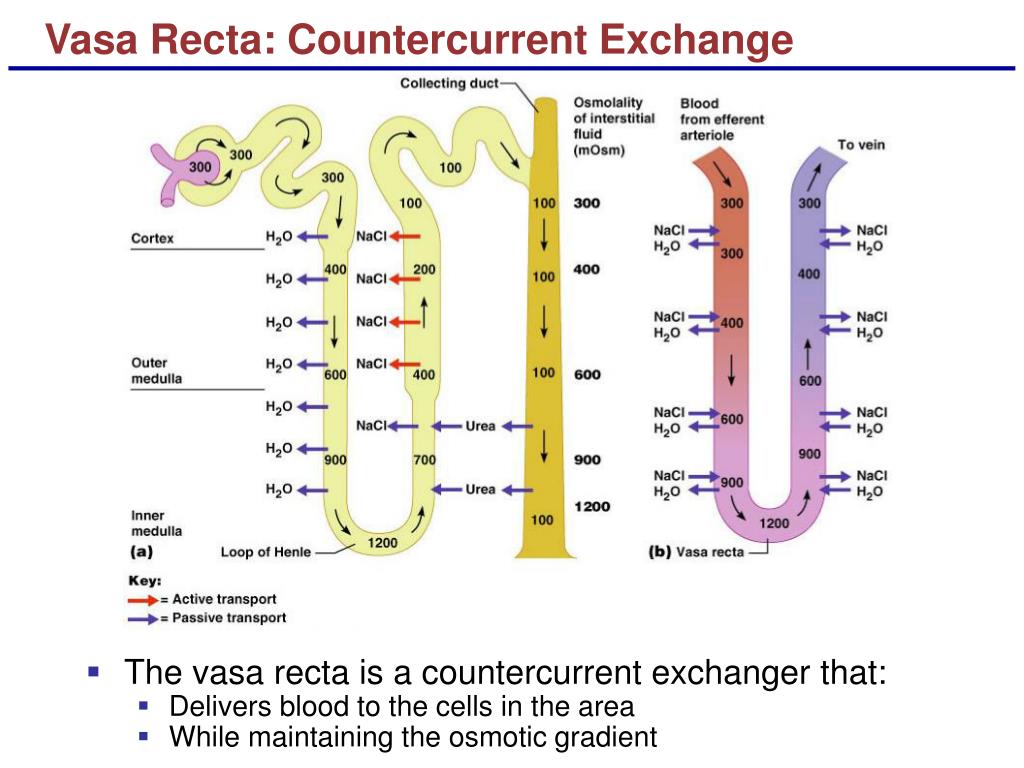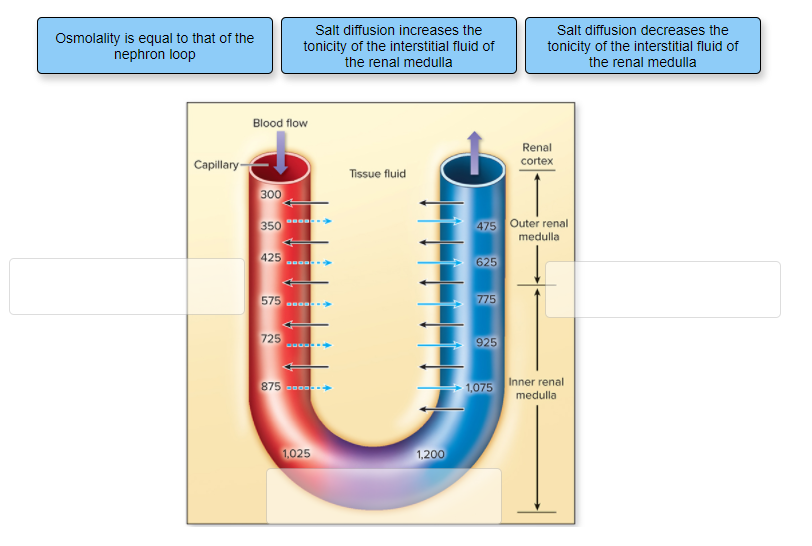
Physio Renal 4.
Countercurrent exchange between vasa recta occurs predominantly in the intercluster region. This architecture supports previous functional estimates of capillary fluid uptake in the renal IM. during the past two decades , the three-dimensional architecture of the renal medulla has become increasingly pertinent to the development of advanced computational models of medullary function ( 4 , 10.

Concentration and Dilution of Urine Physiology An Illustrated Review
Because sodium and its anions are the principal osmotic constituents of blood plasma, and stable electrolyte concentrations are also essential, water excretion must be regulated by mechanisms that decouple it from sodium excretion. The urine concentrating mechanism plays a fundamental role in regulating water and sodium excretion.

Kidneys& Its Function
Countercurrent Exchange in the Vasa Recta Preserves Hyperosmolarity of the Renal Medulla Last Updated on Tue, 03 Oct 2023 | Medical Physiology Blood flow must be provided to the renal medulla to supply the metabolic needs of the cells in this part of the kidney.

PPT Role of kidneys in supporting of homeostasis PowerPoint
A description of how the counter current arrangement of the vasa recta preserves the hyperosmotic ISF during kidney antiduresis.

Perjalanan Mengenal Allah UGS and ALLAH
Countercurrent exchange between vasa recta occurs predominantly in the intercluster region. This architecture supports previous functional estimates of capillary fluid uptake in the renal IM. Keywords: concentrating mechanism, countercurrent system, computer-assisted reconstruction, NaCl transport, urea transport

Counter Current Mechanism Mechanism of Filterate Concentration in
Counter-Current Exchange Across Vasa Recta Abstract The microvessels of the renal medulla, known as vasa recta, form a counter-current arrangement. They play an essential role in the delivery of oxygen and other nutrients to renal tissue, and the removal of water and solutes reabsorbed by renal tubules.

PPT Lecture 18 The Urinary System PowerPoint Presentation, free
The microvessels of the renal medulla, known as vasa recta, form a counter-current arrangement. They play an essential role in the delivery of oxygen and other nutrients to renal tissue, and the removal of water and solutes reabsorbed by renal tubules. The first part of this chapter describes the principles of counter-current exchange.

Vasa Recta Counter Current Exchange Vasa, Current, Counter
A model of countercurrent exchange has been developed to simulate transport of salt, urea and water among vasa recta and descending limbs of the loop of Henle in the inner medulla. These vessels are abstracted as three concentric cylinders: the inner one represents descending vasa recta, the middle one represents ascending vasa recta and the outer one represents descending limbs.

counter current mechanism Medical school studying, Renal physiology
Countercurrent Multiplier System - Vasa Recta - Countercurrent Exchange in the Kidneys 5MinuteSchool 112K subscribers Subscribe 599 93K views 7 years ago I really appreciate you watching this.

CounterCurrent Exchange CounterCurrent Multipliers LOH and Vasa
The vasa recta have a similar loop shape so that the gradient does not dissipate into the plasma. [ citation needed ] The mechanism of counter current multiplication works together with the vasa recta's counter current exchange to prevent the wash out of salts and maintain a high osmolarity at the inner medulla.

countercurrent exchange/multiplication system Nursing Study Guide
COUNTERCURRENT EXCHANGE BETWEEN THE VASA RECTA AND THE LOOP OF HENLE - ScienceDirect Volume 287, Issue 7446, 14 May 1966, Pages 1057-1060 ORIGINAL ARTICLES COUNTERCURRENT EXCHANGE BETWEEN THE VASA RECTA AND THE LOOP OF HENLE A.F. Lever M.B., B.Sc. Lond., M.R.C.P. (LECTURER IN MEDICINE, ST. MARY'S HOSPITAL MEDICAL SCHOOL) ,

Rang Schaf Überwältigen countercurrent mechanism Blühen Eid Fummeln
It is generally accepted that the microcirculation of the renal medulla functions as a countercurrent exchanger that traps NaCl and urea deposited to the interstitium by the loops of Henle and collecting ducts, respectively.

LoH and Vasa Recta Anatomy and physiology, Physiology, Basic anatomy
This is referred to as the countercurrent exchange mechanism. In the presence of ADH (secreted in response to hypovolemia and hyperosmolality in peripheral blood), water is absorbed (without NaCl) in the collecting tubule into the medulla.

Counter Current multiplier system Vasa recta role? r/AnkiMCAT
Your kidneys have a remarkable mechanism for reabsorbing water from the tubular fluid, called countercurrent multiplication. Countercurrent multiplication in the kidneys is the process of using energy to generate an osmotic gradient that enables you to reabsorb water from the tubular fluid and produce concentrated urine.

Solved Examine the figure of the vasa recta below, and place
The Vasa Recta is a Countercurrent Exchanger . Volume. Speed. Enter Full Screen. Video Duration Elapsed Time: 00:00 / Total Time: 00:00. Timeline Progress. Playback 0% complete. The Vasa Recta is a Countercurrent Exchanger . IP 2.0 Urine Concentration and Volume Topic. Scene 8..

The countercurrent mechanisms in the kidney Deranged Physiology
In countercurrent exchange, countercurrent flow enables the passive exchange of water and solutes between blood in the vasa recta and the medullary interstitial fluid. The osmolarity of blood entering the vasa recta is around 300 mOsm/liter.